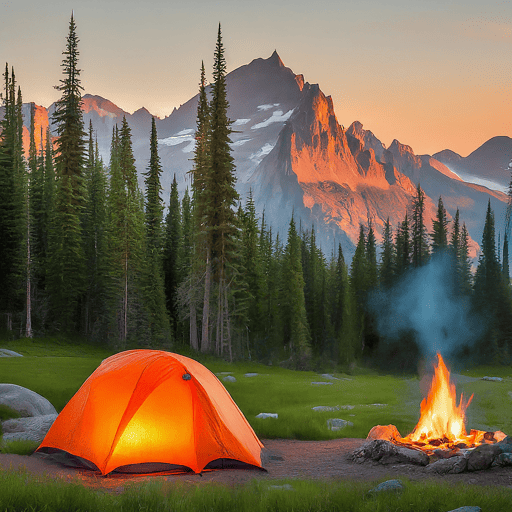Dispersed camping, the practice of camping outside of designated campgrounds on public lands, offers a unique and immersive outdoor experience. However, with this freedom comes the responsibility to protect and preserve the natural environment. This guide will explore the importance of campsite restoration after dispersed camping and provide practical tips for leaving your temporary home in nature better than you found it.
Understanding the Impact of Dispersed Camping
The allure of dispersed camping lies in its simplicity and connection to nature. Yet, even the most careful campers can inadvertently leave a mark on the environment. Repeated use of dispersed campsites can lead to soil compaction, vegetation loss, and disruption of wildlife habitats. Over time, these impacts can accumulate, potentially leading to the closure of popular dispersed camping areas.
Leave No Trace Principles in Campsite Restoration
Mastering the art of Leave No Trace is essential for dispersed camping. These principles guide us in minimizing our impact:
- Plan ahead and prepare
- Travel and camp on durable surfaces
- Dispose of waste properly
- Leave what you find
- Minimize campfire impacts
- Respect wildlife
- Be considerate of other visitors
Applying these principles to campsite restoration ensures we leave our temporary wilderness homes pristine.
Pre-Departure Campsite Assessment
Before setting up camp, document the site’s initial condition. This can be as simple as taking a few photos or making mental notes. Identifying areas that may need restoration later will make your departure process more efficient and effective.
Proper Waste Management
One of the most critical aspects of campsite restoration is proper waste management. Human waste should be buried in catholes dug 6-8 inches deep and at least 200 feet from water sources. All trash must be packed out, including micro-trash like twist ties or fruit peels. Greywater from dishwashing should be dispersed widely, away from water sources.
Fire Site Restoration
If campfires are permitted, proper restoration of fire sites is crucial. Ensure your fire is completely extinguished, then disperse the cool ashes over a wide area. Remove any unburned materials and naturalize the fire ring if it’s not a permanent feature.
Vegetation and Soil Care
Use established tent sites when possible to minimize damage to vegetation during your stay. Fluff up compressed soil in the tent and common areas when breaking camp. Replace any rocks or logs you may have moved, positioning them as naturally as possible.
Managing Social Trails
Stick to established paths to avoid creating new trails. If you notice you’ve inadvertently created a new path, scatter leaves or branches over the area to naturalize it upon departure.
Wildlife Considerations
Remove all food attractants and pack out any leftover food. If you’ve disturbed any small animal habitats, do your best to restore them. Report any significant wildlife encounters to local authorities to help with wildlife management efforts.
Water Source Protection
Take extra care around water sources. Clean up any soap residue or food particles near streams or lakes. If you’ve disturbed bank vegetation, gently replace it as best you can.
Tools and Techniques for Restoration
Consider carrying a small restoration kit, which includes items like a lightweight trowel, a small rake or comb, and a brush. These tools can help you naturalize disturbed areas more effectively. Use natural materials like pine needles, leaves, or small branches to camouflage areas where you’ve removed traces of your stay.
Educating Fellow Campers
Share your restoration practices with other campers you encounter. Leading by example can inspire others to adopt similar practices. Consider participating in or organizing cleanup events in popular dispersed camping areas.
Seasonal Considerations in Restoration
Each season presents unique challenges for campsite restoration:
- Spring: Be extra cautious with muddy areas and new growth.
- Summer: Focus on minimizing impact during peak camping season.
- Fall: Prepare the site for winter by ensuring proper drainage.
- Winter: In snow camping, pay special attention to packing out all waste, as it won’t decompose in frozen ground.
Documenting Your Restoration Efforts
Take before and after photos of your campsite for personal reference. This can be a rewarding way to see the impact of your restoration efforts. Consider sharing these responsibly on social media to inspire others.
Long-Term Benefits of Campsite Restoration
By consistently practicing thorough campsite restoration, we contribute to the long-term preservation of natural areas. This helps maintain access to dispersed camping areas and fosters a culture of responsible outdoor recreation.
Conclusion
Campsite restoration is an integral part of the dispersed camping experience. By leaving our campsites better than we found them, we ensure that these wild spaces remain pristine for future generations. Remember, understanding dispersed camping regulations is just as important as knowing how to restore your campsite.

Leave a Reply